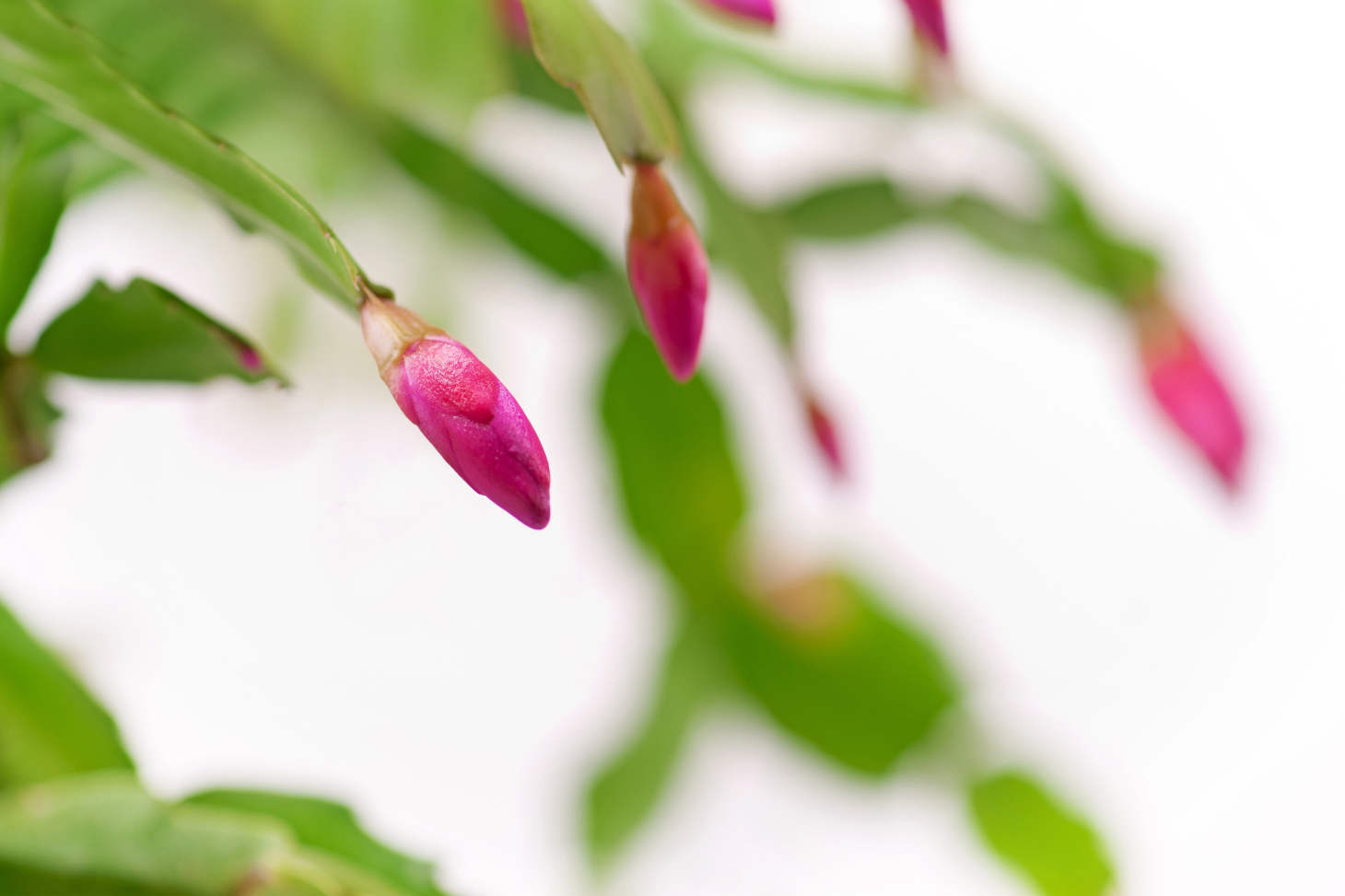Christmas Cactus Buds Falling Off: Causes and Solutions
When your Christmas cactus starts losing its buds, it can be disappointing and confusing. Christmas cactus buds usually fall off because of changes in their environment, such as temperature shifts, drafts, improper watering, or sudden moves. These plants can be sensitive, and even small changes can cause them to drop buds before they get a chance to bloom.
If you want to keep your Schlumbergera healthy and enjoy its colorful flowers, you need to pay attention to its light, temperature, and watering needs. With the right care, you can help your Christmas cactus hold on to its buds and put on a beautiful display each season.
Key Takeaways
- Environmental changes are the main reason for bud drop.
- Proper care helps Christmas cacti keep their buds.
- Attention to water, light, and temperature is essential.
Understanding Christmas Cactus Bud Drop
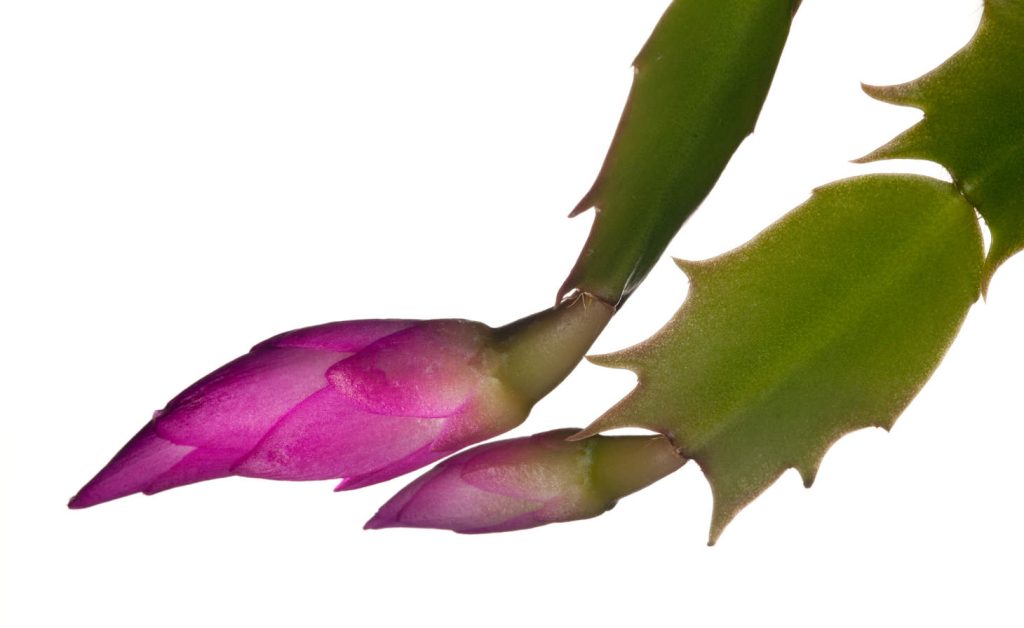
Bud drop in Christmas cactus happens when something interrupts the plant’s ideal conditions for flowering. Paying attention to water, light, temperature, and signs of stress will help you keep flower buds healthy from new growth to full bloom.
Common Causes of Buds Falling Off
Environmental changes are a main reason for bud drop. Moving your cactus from the store to your home can stress the plant and cause buds to fall. A sudden shift in temperature, like placing the cactus near a heater or a draft, also impacts blooming.
Overwatering is another common cause. If the soil stays too wet, roots can rot and the plant may shed flower buds. Underwatering or dry air may also lead to problems. Low humidity, especially when indoor heating turns on, can dry out the plant and its developing buds.
Light also plays a big role. Too little sunlight can make it harder for your Christmas cactus to form or keep its buds. Over-fertilization or lack of key nutrients such as phosphorus might prevent flowering or cause buds to drop before they bloom.
Recognizing Signs of Stress
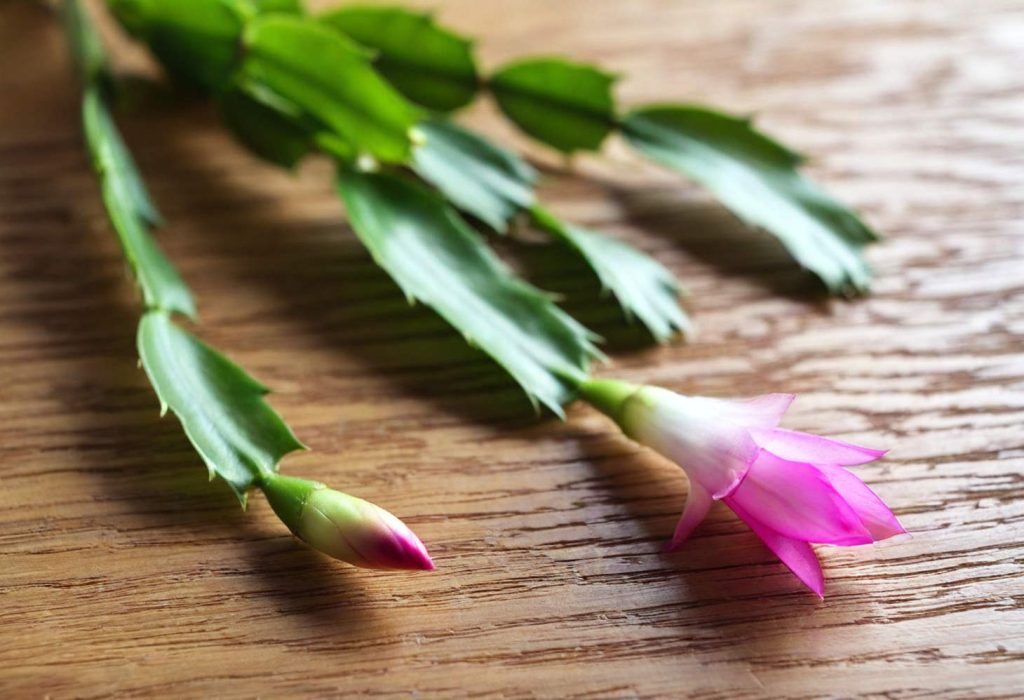
A stressed Christmas cactus will often show its trouble before dropping all the buds. Look for wilting or shrinking flower buds, dull leaves, or limp new growth. If flower buds start drying or turning yellow, it’s time to check your care routine.
Leaf spotting, root rot, or soft stems can point to overwatering. Leaves turning purple or red can indicate too much sun, nutrient deficiencies, inappropriate moisture, or temperature extremes. Buds falling shortly after forming can hint at a problem with humidity or temperature.
Pay attention to the plant’s overall look. If you see multiple signs, like drop in new growth or slow cactus bloom, act fast to fix the environment.
The Budding and Flowering Cycle
Your Christmas cactus forms new flower buds in response to shorter days and cooler nights, usually in late fall. It needs about 12-14 hours of darkness per day for several weeks to start the budding process. Warm, bright rooms may prevent this cycle from starting.
Once buds form, they are sensitive to changes. Disturbing the plant, sudden moves, or room temperature swings during the budding phase can cause bud drop. Consistent care like right light, steady temperatures, and proper watering, helps support healthy flowering and bright cactus blooms.
After flowering, your plant shifts energy to new growth. Careful management during each phase helps prevent stress and keeps your plant healthy year after year.
Essential Growing Conditions for Healthy Buds
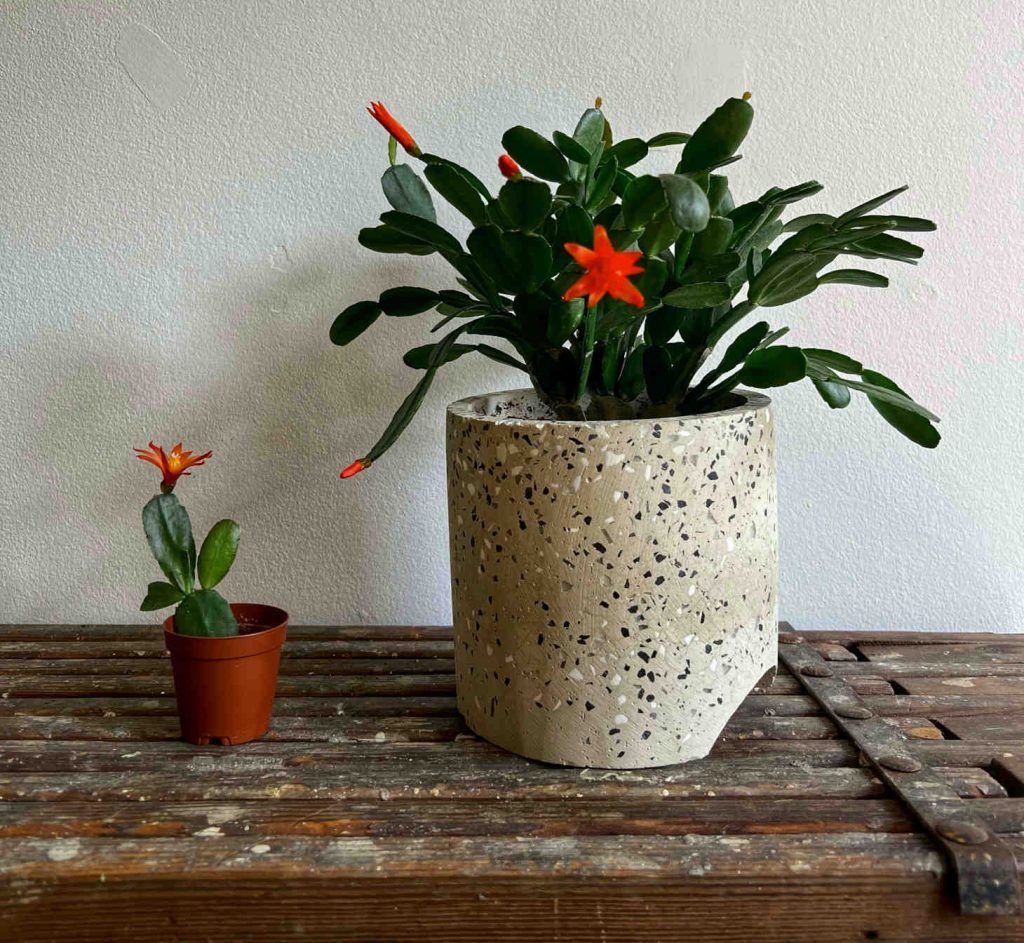
A Christmas cactus needs the right combination of light, temperature, humidity, and water to keep its buds healthy. By controlling these factors, you can help prevent bud drop and support more blooms each season.
Light Requirements and Placement
Christmas cacti are native to the tropical forests of Brazil, where they grow in bright but filtered light under tree canopies. Place your plant in a spot with bright, indirect light. Too much direct sunlight can burn buds and leaves, while too little light may cause weak growth and poor flowering.
Windows with sheer curtains or east-facing windows work well. Avoid placing your cactus near strong artificial lights at night, especially during bud-forming months. If a location is too dark, try moving the plant closer to natural light, but avoid any space that gets hot, midday sun.
Table: Good vs. Bad Placement
| Good Placement | Bad Placement |
|---|---|
| East-facing / North-facing window | Direct afternoon sun |
| West-facing with filter | Dark corners |
| Near bright, filtered light | Next to air vents |
| Unfiltered South-facing window |
Temperature and Humidity Factors
Christmas cacti prefer cool to moderate temperatures. Daytime temperatures around 60-70°F and nighttime temperatures between 50°F-55°F are ideal for bud set. Avoid sudden shifts, as drafts or rapid changes can cause buds to fall off.
Humidity is also important. These houseplants thrive with humidity of 50-60%, similar to what they experience in their native tropical forests. In dry homes, especially in winter, place the pot on a tray of pebbles and water, or lightly mist the air around the plant. Avoid putting your cactus near heaters or cold drafts, as both extremes can stress the plant.
Watering Best Practices
Proper watering is important for healthy buds. Keep the soil evenly moist but never soggy. Let the top inch of soil dry out between waterings. Overwatering leads to root rot and bud drop, while underwatering makes the buds dry up and fall.
During active growth and budding, water more often. When the plant finishes flowering, reduce watering to let it rest. Use room-temperature water and make sure your pot has drainage holes.
If you’re unsure, check the soil moisture regularly. A light, consistent schedule works better than unpredictable soaking or forgetting to water.
Preventing and Addressing Bud Drop

Christmas cactus buds often fall off due to problems like poor nutrition, root issues, or pests and disease. Tackling these causes directly can help your plant keep its buds and stay healthy.
Fertilization and Epsom Salts
Feed your Christmas cactus with balanced, water-soluble fertilizer monthly during spring and summer, but pause fertilization in autumn to promote winter blooms. A balanced fertilizer or one with a higher phosphorus content, such as 20-20-20, is recommended to support robust bloom production. Avoid over-fertilizing to promote healthy blooms and prevent root burn.
Epsom salts, which contain magnesium, can support healthy bud development. Use about 1 teaspoon of Epsom salts dissolved in a gallon of water once a month, but not in the same week as regular fertilizer. Magnesium deficiency can cause yellowing leaves and poor blooming.
Stop all fertilizing starting in early fall, since feeding at this time can disturb the plant’s natural cycle and may result in bud drop.
Managing Repotting and Root Health
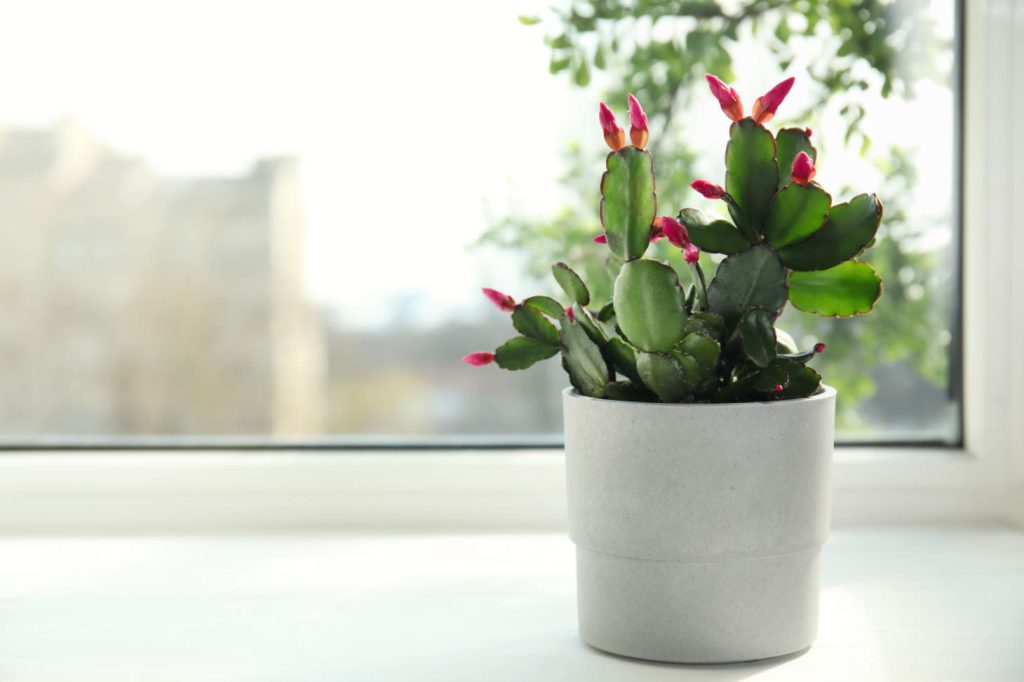
Repot your Christmas cactus every 2-3 years, preferably in spring. Use a well-draining cactus mix. Make sure the new pot is only slightly bigger than the old one, as a pot that is too large can hold extra moisture, putting roots at risk for rot.
Be careful after repotting, as root disturbance can cause bud drop. Make certain that the soil is only lightly moist and avoid overwatering. Always check to ensure water drains freely from the pot. If you notice wilting, yellowing, or a damp smell, roots may be rotting and need quick action. Repot into fresh, well-draining soil and remove any mushy roots.
Keep an eye on the moisture level by sticking your finger an inch into the soil. Only water your plant when the top layer feels dry, but ensure it does not dry out completely. It’s important to note that a Christmas cactus is not native to desert conditions but rather more forest and jungle-like conditions. They thrive with soil that is a wee be wetter as compared to your typical spiky desert cactus plant.
Controlling Pests and Fungal Infections
Pests like mealybugs or spider mites sometimes attack Christmas cactus buds, leading to bud drop. Look for signs like webbing, sticky residue, or tiny white bugs. Wipe leaves gently with a damp cloth or use insecticidal soap if pests appear.
Fungal infections can develop if you overwater or keep your plant in damp, poorly ventilated areas. Mold or dark spots on leaves and stems can be signs. Remove affected areas and make sure your cactus has good air circulation.
Let the soil dry out between waterings, and keep humidity moderate but not excessive. Use sterilized pots and tools to reduce the risk of spreading diseases. Regularly inspect your plant and act quickly if you spot any trouble.

